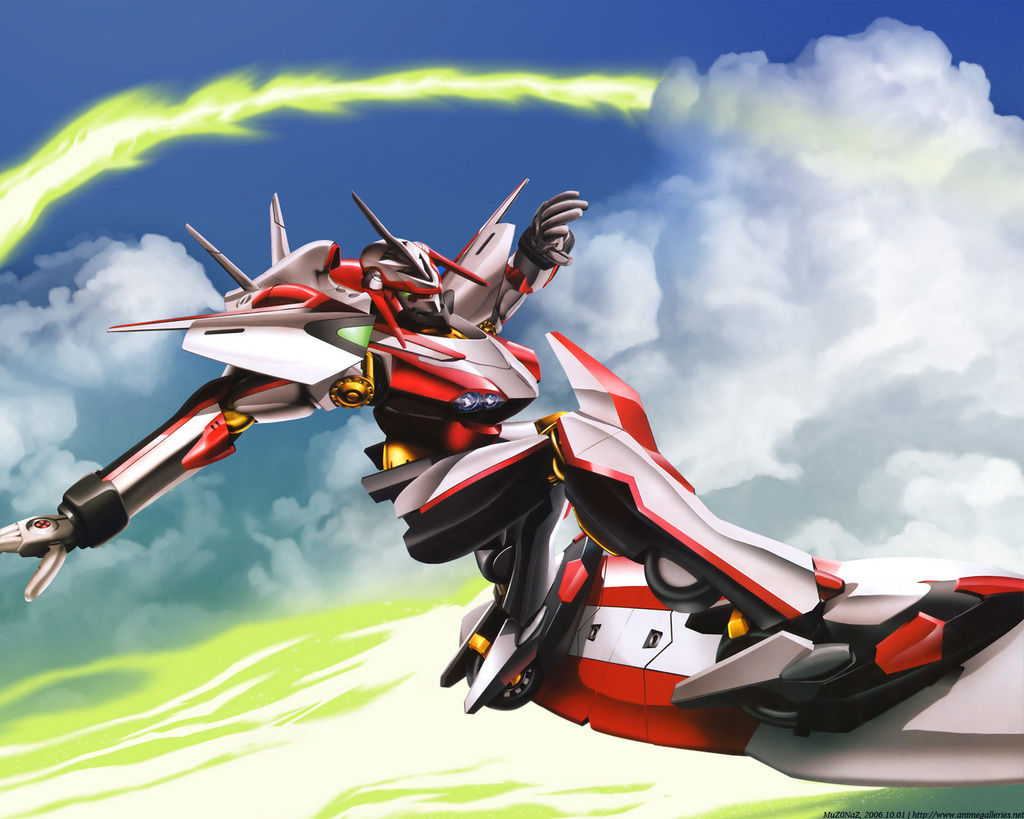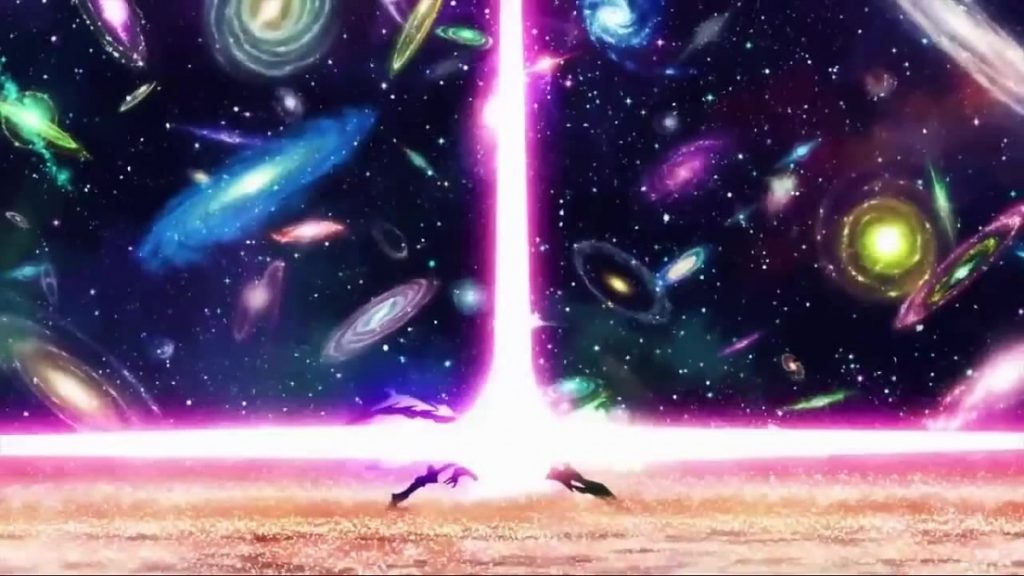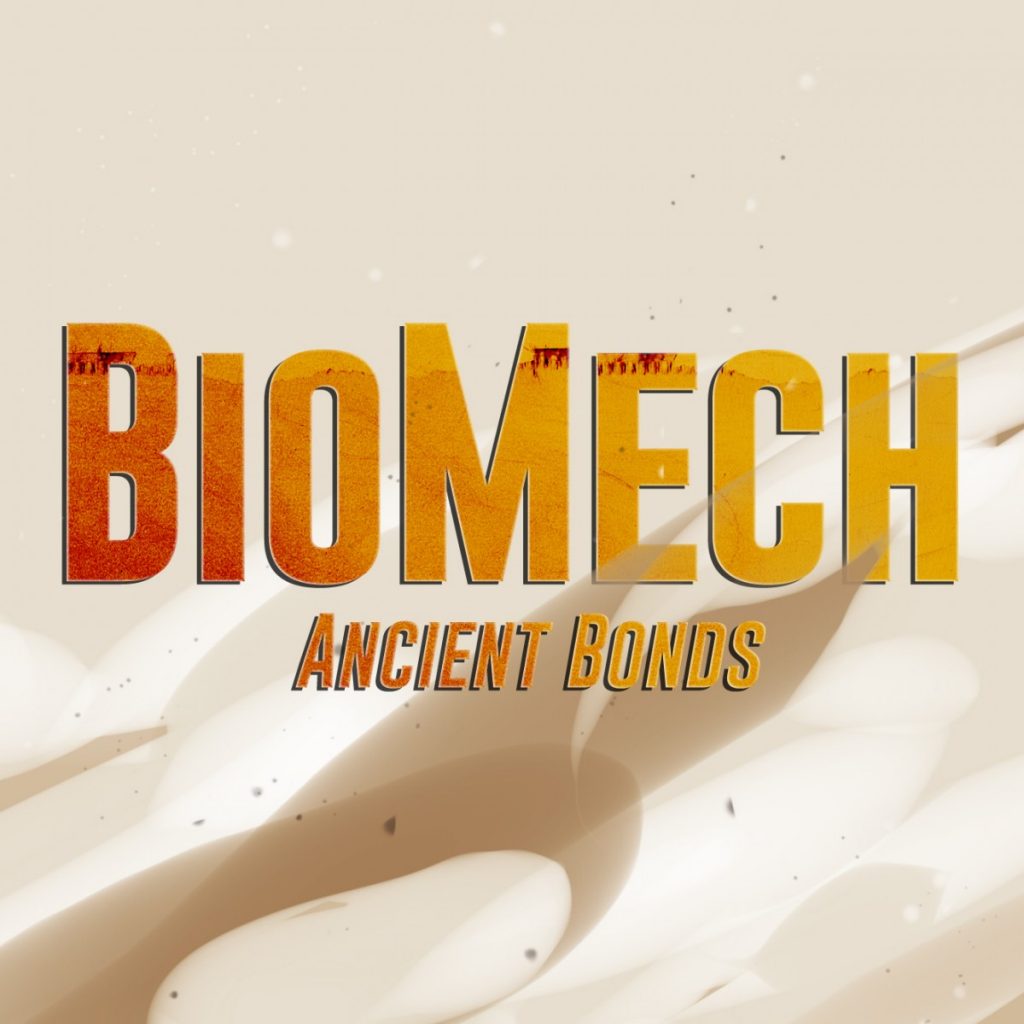In exploring my “home”, which for me is otaku (and to that extent nerd/geek) culture, I’ve been watching anime that myself or others first watched and introduced them to this previously much more private niche. This post is more, I guess soul “surfing”, looking back into my own history with anime and manga and looking for connections to explore on how I came to find “home” in otaku culture, which I was actually scared away from by the parents and pigs scene from the first anime I watched “Spirited Away”.
For myself this was “Eureka Seven” that got me into anime and manga, past a lot of fears and actually was a very healing experience for me that is still ongoing.
“E7” is a 50 episode long original mecha anime series by studio BONES in 2005 (they also did the well-known “The Fullmetal Alchemist: Brotherhood”). Something that would be a rarity to be able to create now in 2017, given it was an original story that wasn’t based on a manga, light-novel, video game, sequel, reboot (same issues that Western entertainment currently has), is a mecha (giant robot) anime (which are more expensive to animate) and is fifty episodes long (most anime now are 12 to 26 at the most).

Artwork of the Nirvash Type Zero mecha “lifting” from the anime “Eureka Seven”.
The show itself is based on surfing culture and makes many references to this culture in the forms of songs in the titles of the episodes, the names of the characters and the writer, Dai Satō, interviewing surfers to flesh out the concepts of “surfing robots” and their connection to the environment. It also has many deeper philosophical and political ideologies weaved throughout it, such as with the Vodarac people and their religion being tied to terrorism and environmentalism as humans forcefully “tame” the land, which is made of a life form known as scub corals, instead of coexist with it.
But “E7” was only my starting point, so to better understand the community I’m apart of, I am also watching the anime and/or manga that inspired them, currently Studio Ghibli works with “Princess Mononoke” and revisiting “Spirited Away”, a type of homecoming for me.

The dragon Haku and ten-year-old Chihiro Ogino from the film “Spirited Away”.
In contrast to many other stories I’ve heard on what show got other otaku interested in anime, as it was Studio Ghibli films, “Spirited Away” scared me away from the genre for a long time. I was only ten when I watched it and I mostly remember it reminded me that I was alone a lot and my fear of losing my mom (the parents being turned into pigs and Chihiro being ten as well didn’t help). So the anime genre was one I didn’t like for a long time, and was kind of scared of because of the initial strong emotions I experience with it.
However thanks to what was probably the only time I ever used a chatroom on MySpace, the person I was talking with brought up E7. This was about three years after it had first come out and anime streaming sites were still the main avenue for watching almost any anime (I’ll go more into the internet’s role in otaku culture later, but the influence can be seen right at the beginning of my own “origin” story). I didn’t know E7 was an anime, only the person had said that it was science fiction, had robots and it was something you just needed to watch (to both understand and enjoy, it is a complex fictional world and story).
After overcoming my initial knee-jerk reaction of old emotions, it only took two episodes to convince me to watch through all fifty in a matter of three days (pre-Netflix binge watching and the episodes are only 25 minutes long at least, two things that also have some weight in regards to watching anime and manga in comparison to Western media both then and now).
So far I have watched “Princess Mononoke” and am looking for a copy of “Spirited Away” to watch to comment on, hopefully, in this post. As for rewatching E7 (again, I often have it on for the soundtrack while editing photos), I’m finding that trying to watch it with a new, more in-depth, analytical perspective is a challenge. Not because it is difficult, but because I’d already done this prior to its sequel “Eureka Seven AO” coming out (there were many noted continuation issues and revised fan plots and stories proposed to fix them). That is aside from reading and rereading the manga and light novels, prior to Bandai Entertainment shutting down and many of them still out-of-print, and comparing the various plots.
Note: The E7 AO series made more of a mess of things than anything and I wasn’t the only fan looking into why the sequel didn’t match up. Same can be said of the movie.
To find a new angle to come at the series with I hadn’t already, what about the anime got me hooked beyond a unique science fiction premise and very “shiny” giant robots surfing in the sky, its personal entertainment value to myself, the deeper sub-text embedded in plot and world etc. To figure out why this particular series left me wanting more and prompted three days of binge watching. So I decided think back to what emotions and thoughts this anime brought up that “Spirited Away” hadn’t.
Around the time I was watching E7 and more anime and manga after that, I had taken to writing my own stories (originals not fan fiction) and posting the chapters online in my MySpace journal and after E7 my GaiaOnline journal (an anime-based social media site) in conjunction with DeviantArt to share and get feed back on. What had prompted me to start writing was, well, I was bored.
I wasn’t all that interested in what television had to offer, it was prior to Netflix and other streaming services for the most part, so movies were on an as it could be afforded basis, which included video games as well. Books were my main source of entertainment and I wasn’t drawn in by the still evolving young adult genre at that time (though I wish I had known that the Uglies series was science fiction at that time). It just didn’t seem like there was anything actually new, just rehashes of things I’d read or seen before.
So to come across a genre where giant robots could surf in the sky (E7), have a light, goofy, misfit humor of a cowboy western in outer space change into dark, emotional a tale of revenge, regret and tragedy (Cowboy Bebop), a crazy vespa riding alien posing as a housekeeper to protect Earth from another alien force with the help of a kid who has robots teleporting out of his head (FLCL) and a space opera where the mechas are flinging galaxies at each other in the final battle (Tengen Toppa Gurren Lagann). And have it all work, each show digging into deeper themes about the nature of humanity to anchor them with no ill conceived or poorly executed plots, no matter how crazy the premise was. For someone who was as bored as I was, it was a treasure trove of creativity and showed me there were many more ways to create and tell a story.

Part of the final battle sequence set on a literally galactic scale in the anime series “Tengen Toppa Gurren Lagaan”.
Ultimately it was the abundant creativity and the freedom that it ended up bring to my own stories that I connected to most strongly with the anime genre. Without anime and E7, I don’t believe I would have thought I could have the freedom, let alone continue to write, my own books and layout the foundations of my own expanding universe that began with the current version of Biomech that I wrote and self-published for a class while earning my two-year degree.

The logo for my own anime and manga inspired space western mecha called “Biomech”.
This abundance of creativity, however, seems to have hit a dam in recent years as the anime and manga industry has started to mirror Hollywood’s current state of creative insecurity, playing it “safe” with reboots, fan service, franchises and relying on manga and light novels instead of the original content that my “origin” series “Eureka Seven” came from. Some of these, fan service in particular, that are continuing to generate stigma for the genre.
